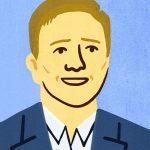The U.S. labor market is resilient. The economy is undergoing at least three critical shifts: consumer demand, inflation, and worker participation. Despite those challenges job gains came in as expected (+263,000) and the unemployment rate declined (to 3.5% from 3.7%) in September.
Consumer Shifts
Industry-level job changes reflect shifts in consumer demand away from goods and toward services. Leisure and hospitality added 83,000 jobs, as travel and restaurants have boomed this year. Healthcare added over 60,000 jobs (bringing employment back to pre-COVID levels); professional and business services employment was up 46,000.
The transportation and warehousing sector had been a prime driver (no pun intended) of job growth since the pandemic recession of 2020. But in September, the sector lost 8,000 jobs – the first such decline since April 2020. This data confirms what Amazon, FedEx, and other big employers in this sector have been telling investors: consumer demand is shifting, and fast.
Inflation Shifts
Wage growth moderated, again. Average hourly earnings for private sector workers (excluding managers) slowed to a 4.7% annual rate over the last three months. On a one-month basis, earnings growth was unchanged at a 4.4% annual rate.
Overall, wage growth has been steady for several months now – which is promising news for the Fed. After an increase in core inflation in August, policy makers were reminded of their ongoing mission – to bring inflation down to the 2% range. Jerome Powell has stated time and time again that price stability is the bedrock of the American economy.
Earnings growth is varied by industry, however. Leisure and hospitality is adding lots of jobs, but wage growth for those workers keeps trending downward. Meanwhile, construction workers are seeing quite strong earnings growth. Achieving price stability will necessitate more industries to experience wage trends like leisure and hospitality, rather than construction.
Worker participation shifts
The household survey – which is used to calculate the unemployment rate – was rather boring. Worker participation was basically flat across the board. The prime-age labor force participation rate fell slightly, to 82.7%. Likewise, the prime-age employment-population ratio was relatively flat at 80.2%
The benchmark unemployment rate (U3) declined from 3.7% to 3.5%, back to where it was in July. The same fall occurred in a more comprehensive measure of unemployment (U6), which includes discouraged workers and those part-time for economic reasons.
Looking at demographic shifts in the labor force participation rate shows declines for both Hispanic and Asian workers. The participation rate for Black workers, which has yet to return to pre-pandemic levels, increased slightly in September after two months of decline.
What does this mean for recruiters?
The labor market is robust, with average monthly job gains of 420,000 so far in 2022. That is far, far from a recession. Even if economic warning signs are flashing elsewhere – in the form of slumping GDP growth, skittish financial markets, a quickly cooling housing market, and weakening global growth – the labor market remains resilient. Recruiters are still facing stiff competition for workers, and that will likely remain the case for at least a few quarters. Even if the U.S. experiences a mild recession, it could be a “job-full” one.
Co-Author: Sam Kuhn







